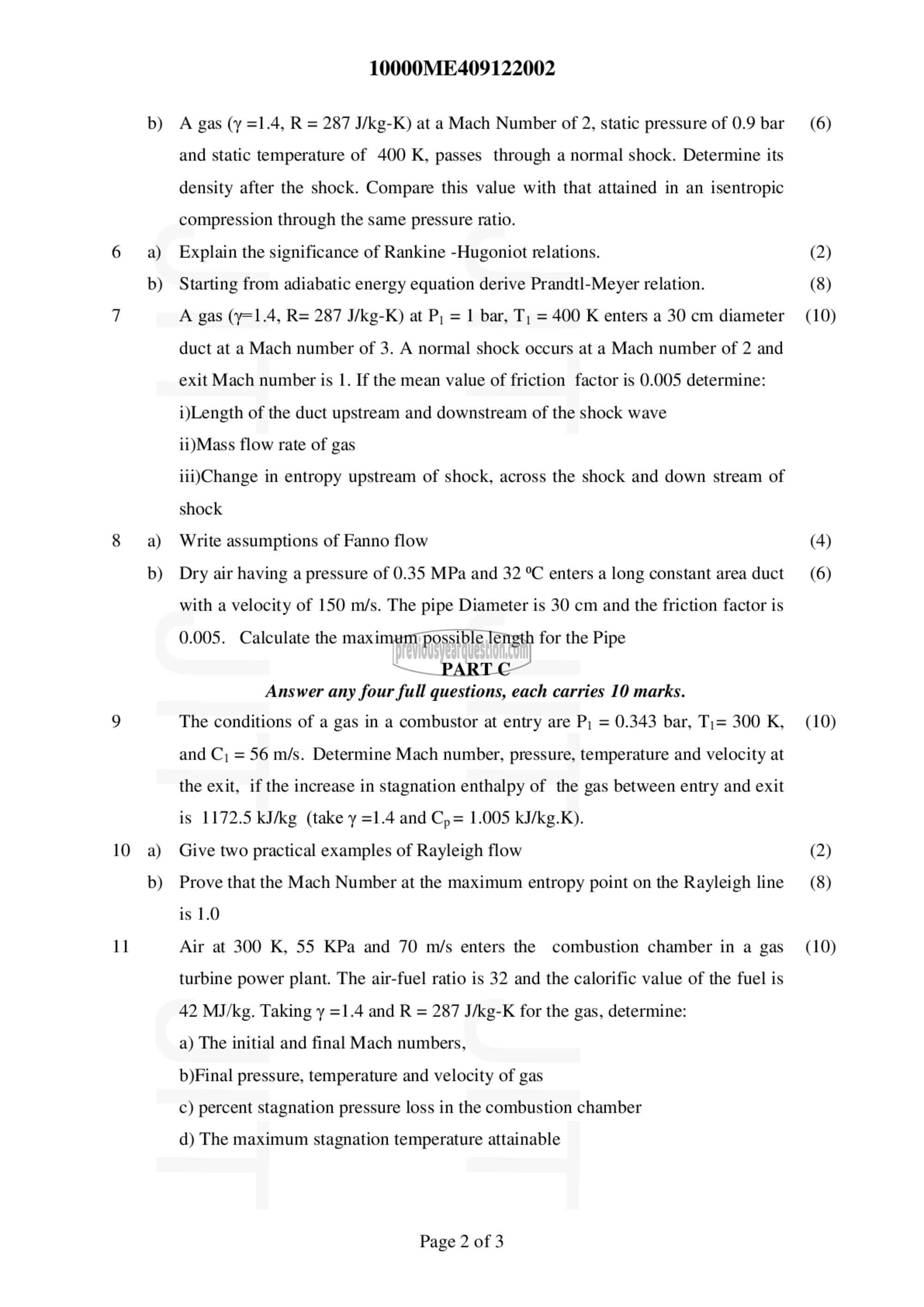APJ ABDUL KALAM TECHNOLOGICAL UNIVERSITY Previous Years Question Paper & Answer
Semester : SEMESTER 7
Subject : Compressible Fluid Flow
Year : 2021
Term : December
Branch : MECHANICAL ENGINEERING
Scheme : 2015 Full Time
Course Code : ME 409
Page:2
b)
6 a)
b)
7
8 a)
b)
9
10 ஐ
b)
11
10000ME409122002
A gas (1 =1.4, R = 287 J/kg-K) at a Mach Number of 2, static pressure of 0.9 bar
and static temperature of 400 K, passes through a normal shock. Determine its
density after the shock. Compare this value with that attained in an isentropic
compression through the same pressure ratio.
Explain the significance of Rankine -Hugoniot relations.
Starting from adiabatic energy equation derive Prandtl-Meyer relation.
A gas (y=1.4, R= 287 J/kg-K) at رط = 1 bar, T; = 400 K enters a 30 cm diameter
duct at a Mach number of 3. A normal shock occurs at a Mach number of 2 and
exit Mach number is 1. If the mean value of friction factor is 0.005 determine:
i)Length of the duct upstream and downstream of the shock wave
ii)Mass flow rate of gas
iii)Change in entropy upstream of shock, across the shock and down stream of
shock
Write assumptions of Fanno flow
Dry air having a pressure of 0.35 MPa and 32 °C enters a long constant area duct
with a velocity of 150 m/s. The pipe Diameter is 30 cm and the friction factor is
0.005. Calculate the maximum possible length for the Pipe
PART C
Answer any four full questions, each carries 10 marks.
The conditions of a gas in a combustor at entry are P; = 0.343 bar, T;= 300 K,
and C; = 56 m/s. Determine Mach number, pressure, temperature and velocity at
the exit, if the increase in stagnation enthalpy of the gas between entry and exit
is 1172.5 kJ/kg (take y =1.4 and دمن 1.005 kJ/kg.K).
Give two practical examples of Rayleigh flow
Prove that the Mach Number at the maximum entropy point on the Rayleigh line
is 1.0
Air at 300 K, 55 KPa and 70 m/s enters the combustion chamber in a gas
turbine power plant. The air-fuel ratio is 32 and the calorific value of the fuel is
42 MJ/kg. Taking y =1.4 and R = 287 J/kg-K for the gas, determine:
a) The initial and final Mach numbers,
b)Final pressure, temperature and velocity of gas
©) percent stagnation pressure loss in the combustion chamber
d) The maximum stagnation temperature attainable
Page 2 of 3
(6)
(2)
(8)
(10)
(4)
(6)
(10)
(2)
(8)
(10)
